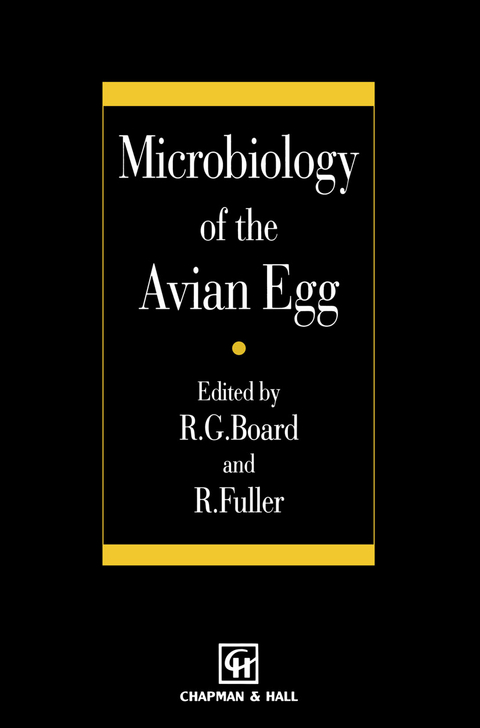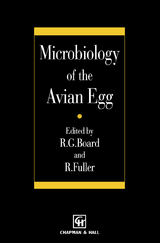Microbiology of the Avian Egg
Chapman and Hall (Verlag)
978-0-412-47570-2 (ISBN)
There is a marked and most unfortunate dichotomy in the studies of avian eggs and hence in the application of new findings in commerce. Thus over the past twenty years there has been a renewed interest in the contribu tions of various parts of an egg to embryo development. This is best illustrated by those studies that have explored the diffusion of respiratory gases across the shell and at long last have provided a fundamental definition of a previously nebulous term, porosity. The activity in this general area has led in the past four years to the publication of three major books dealing with many aspects of egg structure, function and embryogenesis. When brows ing over these books, two developments are evident. First, the advantages that are to be gained by comparative studies. Thus it is now common to see within a single book articles concerned with the eggs of a range of avian species as well as those of reptiles. Second, it is evident that zoologists and physiologists as well as those employed in large breeding firms are all contributing to an improvement of our knowledge of the egg's role in the breeding biology of birds. Comparative studies are a very uncommon feature of studies concerned with bacterial infection of eggs.
Roy Fuller is a private consultant in intestinal microecology, operating from Reading, UK
1 Hen’s egg shell structure and function.- 1.1 The cuticle.- 1.2 The pores.- 1.3 The true shell.- 1.4 The membranes.- 2 Shell accessory materials: structure and function.- 2.1 Introduction.- 2.2 Chemical composition and structure.- 2.3 Function of shell accessory materials.- 2.4 Egg washing/sanitizing.- References.- 3 The egg: a compartmentalized, aseptically packaged food.- 3.1 Compartmentalization.- 3.2 An aseptically packaged food.- 3.3 Antimicrobial defence.- 3.4 Chemotaxis and egg infection.- 3.5 Colonization of the gut.- 4 Trans-shell transmission.- 4.1 Introduction.- 4.2 Routes of transmission.- 4.3 Factors affecting trans-shell infection of eggs.- 4.4 Control of trans-shell transmission.- 4.5 Summary.- 5 Contamination of eggs with potential human pathogens.- 5.1 Introduction.- 5.2 Historical background.- 5.3 Salmonella contamination of eggs.- 5.4 Eggs and egg dishes as vehicles for human salmonellosis.- 5.5 Salmonella infection in laying hens.- 5.6 Other pathogens.- 6 The microflora of the alimentary tract and avian pathogens: translocation and vertical transmission.- 6.1 Introduction.- 6.2 General strategies for vertical transmission and survival in the tissues.- 6.3 The normal microflora of the alimentary tract of the chicken.- 6.4 Factors affecting the composition of the flora.- 6.5 Translocation of the indigenous gut flora.- 6.6 Vertical transmission of avian pathogens.- 6.7 Summary.- 7 Contaminants of liquid egg products.- 7.1 Introduction.- 7.2 Eggshell egg contamination.- 7.3 Liquid egg contaminants.- 7.4 Summary.- 8 Effects of processing on the microbiology of eggs.- 8.1 Introduction.- 8.2 Egg washing.- 8.3 Preservation of eggs.- 8.4 Egg breaking.- 8.5 Long-term preservation of liquid egg.- 8.6 Microbiological concerns in developing new market forms.-8.7 Safe preparation of eggs and egg dishes at home.- 8.8 Summary.
| Erscheint lt. Verlag | 31.12.1993 |
|---|---|
| Zusatzinfo | X, 181 p. |
| Verlagsort | London |
| Sprache | englisch |
| Maße | 155 x 235 mm |
| Themenwelt | Naturwissenschaften ► Biologie ► Mikrobiologie / Immunologie |
| Naturwissenschaften ► Biologie ► Zoologie | |
| Technik ► Lebensmitteltechnologie | |
| ISBN-10 | 0-412-47570-7 / 0412475707 |
| ISBN-13 | 978-0-412-47570-2 / 9780412475702 |
| Zustand | Neuware |
| Haben Sie eine Frage zum Produkt? |
aus dem Bereich




